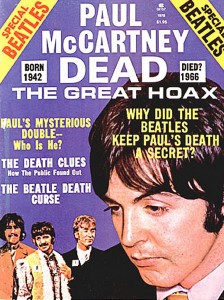 Yes, Paul was dead. And his bandmates covered up his disappearance by replacing him with a double — because they loved him. And, more importantly, because they loved the record-buying fans who loved him. The story of faux Paul (let’s call him Faul ) was so full of cryptic elements, how could a girl like me who savored all things dark and mysterious NOT believe it! In fact, 47 years later, I still wonder if it may be true. L.O.L., so to speak.
Yes, Paul was dead. And his bandmates covered up his disappearance by replacing him with a double — because they loved him. And, more importantly, because they loved the record-buying fans who loved him. The story of faux Paul (let’s call him Faul ) was so full of cryptic elements, how could a girl like me who savored all things dark and mysterious NOT believe it! In fact, 47 years later, I still wonder if it may be true. L.O.L., so to speak.
The granddaddy of all rock myths goes like this: On November 9, 1966, Paul storms out of Abbey Road studios in a huff, and on his way home stops to pick up a female hitchhiker named Rita. Upon realizing the identity of the driver, the girl throws her arms around him, causing him to swerve and wreck his Aston-Martin on a rain-soaked street. Both die in the fiery crash. Paul is decapitated.
The original rumor may have stemmed from an incident on January 7, 1967. That night, Paul and assorted members of the Rolling Stones were traveling in Mick Jagger’s car, headed to a party at the home of Keith Richards. A Moroccan art gallery assistant named Mohammed Hadjij was also en route to the party, driving Paul’s black Mini Cooper, which was rumored to be full of drugs. He crashed the car on the M1 motorway outside of London and was hospitalized for minor injuries. Because the Mini was highly customized to include arm chairs, a wet bar and smoke-tinted glass, those on the scene recognized it as Paul’s car, and word began to spread that the Beatle may have been killed.
Flash forward to August 1968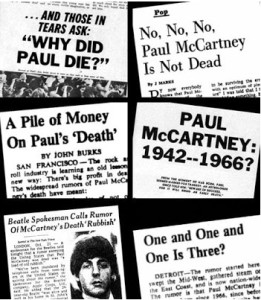 : A singer, songwriter and producer named Terry Knight attends a Beatles recording session at Abbey Road studios, and sees the now-bickering band in action. Sensing Paul’s frustration, and viewing him as the injured party, he goes on to write a song called “Saint Paul.” One lyric — Sir Isaac Newton said it [an apple] had to fall — presumably referred to the eventual demise of Apple Records. The song fueled the growing “Paul is Dead” rumors, which had now spread to the U.S.
: A singer, songwriter and producer named Terry Knight attends a Beatles recording session at Abbey Road studios, and sees the now-bickering band in action. Sensing Paul’s frustration, and viewing him as the injured party, he goes on to write a song called “Saint Paul.” One lyric — Sir Isaac Newton said it [an apple] had to fall — presumably referred to the eventual demise of Apple Records. The song fueled the growing “Paul is Dead” rumors, which had now spread to the U.S.
Articles theorizing Paul’s death begin appearing in college newspapers, first in Drake University’s Times-Delphic, and then in Northern Illinois University’s Northern Star. But the story really exploded when Eastern Michigan University student Tom Zarski phoned Russ Gibb of WKRN-FM in Detroit, and told the DJ to play the Beatles’ “Revolution 9” backwards. Listeners were shocked to hear the lyric turn me on dead man.
 Within a few days of this broadcast, University of Michigan student Fred LaBour published a satirical article in The Michigan Daily student paper, titled “McCartney Dead; New Evidence Brought to Light.” He alleged that Paul was replaced by a Scottish orphan named William Campbell who had once won a McCartney lookalike contest. The mounting evidence of a cover-up inspired a two-hour Detroit radio program called “The Beatle Plot,” which aired in October 1969.
Within a few days of this broadcast, University of Michigan student Fred LaBour published a satirical article in The Michigan Daily student paper, titled “McCartney Dead; New Evidence Brought to Light.” He alleged that Paul was replaced by a Scottish orphan named William Campbell who had once won a McCartney lookalike contest. The mounting evidence of a cover-up inspired a two-hour Detroit radio program called “The Beatle Plot,” which aired in October 1969.
By now, major news outlets like the London Times, the New York Times, and the Los Angeles Times started to take notice. Satirical songs even began popping up: “The Ballad of Paul” by the Mystery Tour; “Brother Paul” by Billy Shears and the All Americans; and “So Long Paul” by Werbley Finster, a pseudonym for José Feliciano.
Rumors continued through the fall of 1969 and into 1970, with conspiracy theorists finding ever-increasing evidence of Paul’s death by scouring Beatle songs and album covers for hidden clues. Here are a few of the major ones:
On the back cover of the Sgt. Pepper album, Paul is wearing a badge with words that appear to be “OPD,” which is British police jargon for “Officially Pronounced Dead.” (The patch actually stands for Ontario Police Department; the squad gave the button to Paul when he toured Canada).
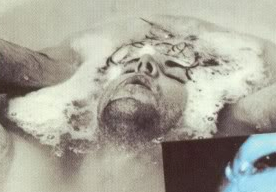 On the same album, the character standing behind Paul is raising his hand above the Beatle’s head. This is supposedly a symbol of death in some religions. And a tiny Aston Martin convertible (the car in which Paul was killed) appears on the lap of a doll in the right-hand side of the cover.
On the same album, the character standing behind Paul is raising his hand above the Beatle’s head. This is supposedly a symbol of death in some religions. And a tiny Aston Martin convertible (the car in which Paul was killed) appears on the lap of a doll in the right-hand side of the cover.
In the fade-out of “Strawberry Fields Forever,” John can be heard saying I buried Paul. He later claimed he was saying cranberry sauce.
On the cover of the “Magical Mystery Tour” album, we know that Paul is the walrus, because John confirmed it in his song “Glass Onion.” Conspiracists falsely proclaimed that the Greek word for corpse is “walrus.”
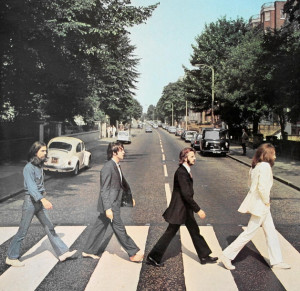 In fact, the title of “Glass Onion” supposedly sprang from British slang for the glass handles, known as glass onions, that were affixed to 19th century caskets. Thus, Paul is in the casket, looking through a glass onion.
In fact, the title of “Glass Onion” supposedly sprang from British slang for the glass handles, known as glass onions, that were affixed to 19th century caskets. Thus, Paul is in the casket, looking through a glass onion.
The poster that accompanied the “White Album” features a photo of Paul soaking in a tub of water. It appears that his decapitated head is floating in blood.
In a clip from the “Magical Mystery Tour” film, all four Beatles are wearing red roses on the lapels of their white tuxedoes, except for Paul, who sports a black one.
The “Abbey Road” album is rife with clues. The cover photo of the four Beatles walking across the road is seen as a funeral procession. John, in white, is the priest; Ringo, in black, is the undertaker; and George, in jeans, is the gravedigger. And barefoot Paul, out of step with the others, is the corpse, because Italians supposedly bury their dead without shoes and socks. Paul is holding his final cigarette in his right hand. But we know the character on the album cover is a fake, because the original Paul was left-handed.
In the background of the “Abbey Road” cover photo we see a white Volkswagen with the license plate “28IF.” Paul would have been 28 at the time the photo was taken — IF he had lived. (That famous Volkswagen was sold at auction in 1986 for over $4,000).
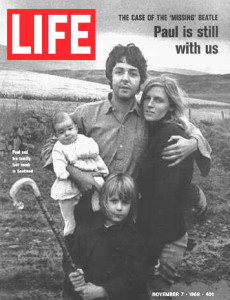 In a 1969 issue of Life magazine, Paul was pressed to address the issue. He said: “It is all bloody stupid. I picked up that OPD badge in Canada. It was a police badge. Perhaps it means Ontario Police Department or something. I was wearing a black flower because they ran out of red ones. It is John, not me, dressed in black on the cover and inside of ‘Magical Mystery Tour.’ On ‘Abbey Road’ we were wearing our ordinary clothes. I was walking barefoot because it was a hot day. The Volkswagon just happened to be parked there…Perhaps the rumor started because I haven’t been much in the press lately. I have done enough press for a lifetime, and I don’t have anything to say these days.”
In a 1969 issue of Life magazine, Paul was pressed to address the issue. He said: “It is all bloody stupid. I picked up that OPD badge in Canada. It was a police badge. Perhaps it means Ontario Police Department or something. I was wearing a black flower because they ran out of red ones. It is John, not me, dressed in black on the cover and inside of ‘Magical Mystery Tour.’ On ‘Abbey Road’ we were wearing our ordinary clothes. I was walking barefoot because it was a hot day. The Volkswagon just happened to be parked there…Perhaps the rumor started because I haven’t been much in the press lately. I have done enough press for a lifetime, and I don’t have anything to say these days.”
Eventually the Paul is Dead rumors faded, as new rock hoaxes emerged. Actually, McCartney got off easy compared to the rumor that haunted Rod Stewart for so many years (more on this in a future post).
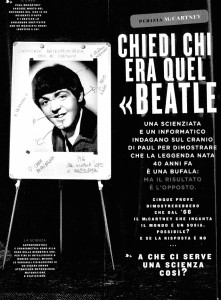 Yet, now and again someone comes forth with a new take on the matter. The August 2009 Italian issue of Wired magazine reported that two forensic scientists – Francesco Gavazzeni and Carlesi Gabriella – conducted a biometrical analysis of Paul’s face, via photos taken before and after the alleged 1966 car accident. They had set out to prove once and for all that Paul’s death was a hoax. But after careful analysis of his skull, ears, palate, teeth, and curve of his jaw, they concluded that the Beatle really was replaced by lookalike.
Yet, now and again someone comes forth with a new take on the matter. The August 2009 Italian issue of Wired magazine reported that two forensic scientists – Francesco Gavazzeni and Carlesi Gabriella – conducted a biometrical analysis of Paul’s face, via photos taken before and after the alleged 1966 car accident. They had set out to prove once and for all that Paul’s death was a hoax. But after careful analysis of his skull, ears, palate, teeth, and curve of his jaw, they concluded that the Beatle really was replaced by lookalike.
Of course, there are those who say Paul has been dead for decades – in terms of the inferior quality of his post-Beatles work. But let’s give him a break. To paraphrase Ringo: if it hadn’t been for Paul coaxing his sometimes sluggish mates into the studio, there wouldn’t have been nearly as many Beatle albums. Only Bona Fide Paul could have lit that spark.
Here’s the hilarious “The Ballad of Paul” – complete with clues – by The Mystery Tour:
© Dana Spiardi, April 1, 2013
]]>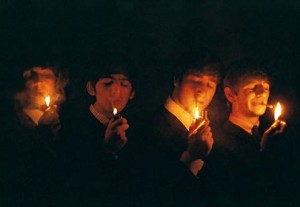 Even if Bob Dylan hadn’t introduced The Beatles to marijuana at New York’s Delmonico Hotel, the boys would have lit up soon enough. From that August 1964 night onward, “let’s have a laugh” quickly became their code phrase for “let’s have a toke.” And laugh they did. At least until the infamous Sgt. Norman Pilcher and his drug-sniffing dogs Yogi and BooBoo came snooping around their London abodes.
Even if Bob Dylan hadn’t introduced The Beatles to marijuana at New York’s Delmonico Hotel, the boys would have lit up soon enough. From that August 1964 night onward, “let’s have a laugh” quickly became their code phrase for “let’s have a toke.” And laugh they did. At least until the infamous Sgt. Norman Pilcher and his drug-sniffing dogs Yogi and BooBoo came snooping around their London abodes.
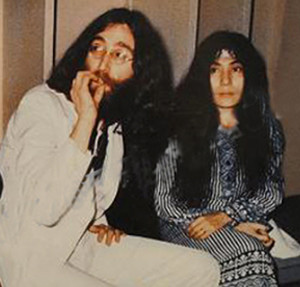 The cop and his canines found 12 grams of cannabis in a binocular case in John and Yoko’s apartment in October 1968, and a few months later discovered a small amount in one of George’s shoes during a raid on his home. The response of “The Quiet Beatle” to this search and seizure? “I’m a tidy man,” he said. “I keep my socks in the sock drawer and stash in the stash box. It’s not mine.” Nice try, George. (Some say Sgt. Pilcher was the namesake of Semolina Pilchard, who climbed the Eiffel Tower in John’s song “I Am the Walrus.”)
The cop and his canines found 12 grams of cannabis in a binocular case in John and Yoko’s apartment in October 1968, and a few months later discovered a small amount in one of George’s shoes during a raid on his home. The response of “The Quiet Beatle” to this search and seizure? “I’m a tidy man,” he said. “I keep my socks in the sock drawer and stash in the stash box. It’s not mine.” Nice try, George. (Some say Sgt. Pilcher was the namesake of Semolina Pilchard, who climbed the Eiffel Tower in John’s song “I Am the Walrus.”)
Paul was the most prolific pot puffer of the bunch, busted 5 times in all. Actually, wife Linda took the rap on one occasion, when cops pulled the couple over for running a red light in L.A. and found cannabis in their Lincoln Continental.
Paul’s first bust, in Sweden in 1972, cost him $2,000. Fear of serving time in prison for such an offense supposedly inspired him to write “Band on the Run” (stuck inside these four walls / sent inside forever.) His second arrest came in 1973, when police found more than your average garden-variety weeds growing in the soil of his Scotland farm. Paul pleaded agricultural ignorance, saying he was merely growing seeds sent to him by a fan. How was he to know they would sprout cannabis?
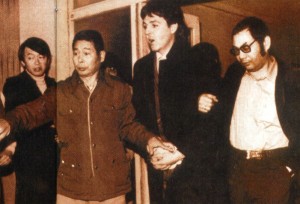 His famous drug bust at Japan’s Narita Airport in January of 1980 landed him in a Tokyo prison for 9 days. (It’s been rumored that Yoko set him up by tipping off airport security officials ahead of time.) Interestingly, the Japanese were among the world’s biggest Beatle fans. They probably bowed like crazy all the while they were charging him. I love the fantasy of Paul wrapped in a blue and white yukata, sitting on a jail cell tatami mat, taking song requests from prison guards. “Beatle-san, prease pray “Prease, Prease Me.” Arigatou gozaimasu!
His famous drug bust at Japan’s Narita Airport in January of 1980 landed him in a Tokyo prison for 9 days. (It’s been rumored that Yoko set him up by tipping off airport security officials ahead of time.) Interestingly, the Japanese were among the world’s biggest Beatle fans. They probably bowed like crazy all the while they were charging him. I love the fantasy of Paul wrapped in a blue and white yukata, sitting on a jail cell tatami mat, taking song requests from prison guards. “Beatle-san, prease pray “Prease, Prease Me.” Arigatou gozaimasu!
You’d think he would have finally learned a tough lesson about the dangers of pot-on-the-go, but NO. Almost four years to the date after the Narita Airport arrest, he and Linda were busted in Barbados. AND, returning home from the trip, Linda was arrested at London’s Heathrow Airport for the prior day’s incident! As Paul’s “Uncle Albert/Admiral Halsey” lyrics testify, he truly believed in hands across the water, heads across the sea.
As Americans cheer (or jeer) the marijuana legalization bandwagon that’s moving from state to state, it’s interesting to note that as early as 1967, prominent Britons were petitioning the government for the reform of cannabis laws.
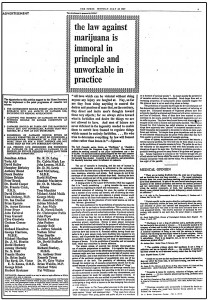 The Beatles and their manager Brian Epstein were 5 of the 64 people – many of whom were medical doctors and pillars of society – to sign a petition that appeared as a full-page ad in The Times on July 24, 1967, titled “The law against marijuana is immoral in principle and unworkable in practice.” It advocated research into the medicinal uses of marijuana, demanded that the smoking of weed on private premises no longer be considered an offense, and asked the government to commute the sentences of those convicted of using cannabis.
The Beatles and their manager Brian Epstein were 5 of the 64 people – many of whom were medical doctors and pillars of society – to sign a petition that appeared as a full-page ad in The Times on July 24, 1967, titled “The law against marijuana is immoral in principle and unworkable in practice.” It advocated research into the medicinal uses of marijuana, demanded that the smoking of weed on private premises no longer be considered an offense, and asked the government to commute the sentences of those convicted of using cannabis.
It’s no surprise that Paul paid for the ad, which cost about $2,300. It inspired a public debate that actually did liberalize laws against marijuana use in Britain.
But today, according to Wikipedia, it’s still illegal to “possess, grow, distribute or sell [cannabis] in the U.K. without appropriate licenses.” Charges range from a “warning” and/or fines, to 5 years in prison for possession, and up to 14 for production and trafficking.
Still, both the U.K. and U.S. have become a lot more accepting and forgiving of former drug offenders. After all, the Queen knighted pot-head Paul, and the American public elected one-time hash-hound Barack Obama as President.
And as for Mr. McCartney, it appears he’s retired his roach clips, pipes and Zig-Zag papers for good. In 2012 he told The Daily Mail: “I smoked my share. When you’re bringing up a youngster [10-year-old daughter Beatrice], your sense of responsibility does kick in, if you’re lucky, at some point.” Ah, but the nose knows better. During a concert in 2013, he stopped mid-set and said, “That’s some pretty good weed I can smell up here. “Whew! What are you doing to me?”
Paul invited us all to get “Hi, Hi, Hi” with him in 1976! The video features his lovely Linda and the band Wings. Oh, yeah…Paul really was the cute Beatle.
© Dana Spiardi, July 25, 2014
]]>
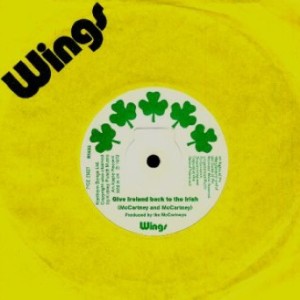 Paul’s record company EMI reluctantly agreed to let him and his band Wings record and release the protest song, but warned it would be banned. Which, of course, it was — by the BBC, Radio Luxembourg and the U.K.’s Independent Television Authority. But despite its lack of airplay it managed to chart – reaching the #1 spot in Ireland and Spain, #16 in the U.K., and #21 in the U.S. Like John and Yoko, whose “Two Virgins” album was banned for full frontal nudity on its cover, Paul now had his own censored piece of work, thus qualifying him for membership in the rock-n-roll rabble-rousers society (at least for a short time).
Paul’s record company EMI reluctantly agreed to let him and his band Wings record and release the protest song, but warned it would be banned. Which, of course, it was — by the BBC, Radio Luxembourg and the U.K.’s Independent Television Authority. But despite its lack of airplay it managed to chart – reaching the #1 spot in Ireland and Spain, #16 in the U.K., and #21 in the U.S. Like John and Yoko, whose “Two Virgins” album was banned for full frontal nudity on its cover, Paul now had his own censored piece of work, thus qualifying him for membership in the rock-n-roll rabble-rousers society (at least for a short time).
Most people aren’t aware that John had also recorded two songs in response to Britain’s brutal treatment of Ireland: “Sunday Bloody Sunday” and “The Luck of the Irish,” both featured on his June 1972 LP “Some Time in New York City.”
John said he was inspired to write “The Luck of the Irish” after taking part in a 1971 London protest march in support of Ireland. Said John, “I’m a quarter Irish or half Irish or something, and long, long before the trouble started, I told Yoko that’s where we’re going to retire, and I took her to Ireland. We went around Ireland a bit and we stayed in Ireland and we had a sort of second honeymoon there. So I was completely involved in Ireland.”
Many critics lauded John’s empathetic song supporting the Emerald Isle – in the ‘Pool they told us the story / how the English divided the land / of the pain and the death and the glory / and the poets of old Ireland – but bemoaned Yoko’s contribution to the lyrics, which included mentions of shamrocks, rainbows and leprechauns, and a hope for the “world [to] be one big Blarney stone.”
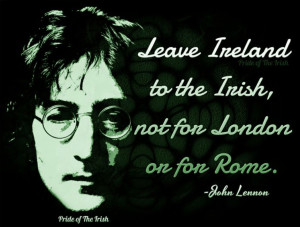 In response to Bloody Sunday, John participated in a protest outside the New York office of Britain’s national airline, BOAC. Soon after, he wrote “Sunday Bloody Sunday.” Commenting on his motivation to pen the song, he said: “Most other people express themselves by shouting or playing football at the weekend. But me, here I am in New York and I hear about the 13 [sic] people shot dead in Ireland, and I react immediately. And being what I am, I react in four-to-the-bar with a guitar break in the middle.”
In response to Bloody Sunday, John participated in a protest outside the New York office of Britain’s national airline, BOAC. Soon after, he wrote “Sunday Bloody Sunday.” Commenting on his motivation to pen the song, he said: “Most other people express themselves by shouting or playing football at the weekend. But me, here I am in New York and I hear about the 13 [sic] people shot dead in Ireland, and I react immediately. And being what I am, I react in four-to-the-bar with a guitar break in the middle.”
Interestingly, John recorded his song during the same month that Paul recorded “Give Ireland Back to the Irish.” But Paul beat John to the punch, releasing his single four months before Lennon’s song appeared on his “Some Time in New York City” album. The two were still in a period of backbiting and competition following the Beatles’ 1970 breakup, so John no doubt got his Irish up over Paul’s single, which was more timely and garnered much attention.
John’s original family surname was O’Lennain, the Gaelic word for love. But unlike most people who boast of even the most minuscule amount of Irish blood flowing through their veins, John rarely made a great deal of fanfare about his roots.
For the record, Paul is three-quarters Irish and George Harrison was one-quarter Irish. Poor Ringo hasn’t a drop of Irish blood, but we love him all the same.
Here’s John’s “Sunday Bloody Sunday”:
And “The Luck of the Irish,” minus Yoko’s singing:
And Paul’s “Give Ireland Back to the Irish”:
© Dana Spiardi, March 17, 2013
]]>
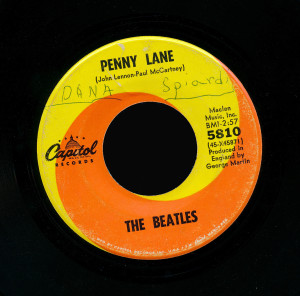 Forty-seven years ago this month, the Beatles released their 24th U.S. single, a double A-side record featuring two songs inspired by John Lennon and Paul McCartney’s childhood memories of Liverpool: “Strawberry Fields Forever” and “Penny Lane.” Paul wrote the idyllic “Penny Lane” based on happy recollections of the suburban Liverpool street where he and John would meet to catch the bus to the city center. John named his surreal “Strawberry Fields Forever” after a Salvation Army children’s home near the gardens where he played as a boy. (Interestingly, John originally planned to incorporate Penny Lane and other Liverpool haunts into one of his earlier nostalgic songs, “In My Life,” but he ended up dropping all references to specific landmarks.)
Forty-seven years ago this month, the Beatles released their 24th U.S. single, a double A-side record featuring two songs inspired by John Lennon and Paul McCartney’s childhood memories of Liverpool: “Strawberry Fields Forever” and “Penny Lane.” Paul wrote the idyllic “Penny Lane” based on happy recollections of the suburban Liverpool street where he and John would meet to catch the bus to the city center. John named his surreal “Strawberry Fields Forever” after a Salvation Army children’s home near the gardens where he played as a boy. (Interestingly, John originally planned to incorporate Penny Lane and other Liverpool haunts into one of his earlier nostalgic songs, “In My Life,” but he ended up dropping all references to specific landmarks.)
When it came to musical styles, John and Paul were often yin and yang personified. “Penny Lane,” with its spritely trumpet flourishes, is as chipper and straightforward as the multi-layered “Strawberry Fields Forever” is sad and mysterious.
I was seven years old when I bought this 45 rpm record after hearing “Penny Lane” on the radio. It was the perfect little tune for a child, with its storybook-like references to the barber, the banker, the fireman, and the pretty nurse selling poppies from a tray. In time I would discover the meaning of the song’s British terminology.
I would learn that a “mac” is short for Mackintosh, a waterproof raincoat. “Four of fish” refers to four pennies’ worth of fish and chips. The poppies are to be worn on Armistice Day to honor the lost souls of WWI. A “roundabout” is a circular intersection, common in England. And, as for “finger pie”…well, I’ll leave it to your imagination. I like to keep my blog clean. It’s a clean machine.
But then I flipped the record over, and entered a completely different world. My puzzlement over a few words in “Penny Lane” was nothing compared to my bewilderment over the imagery in “Strawberry Fields Forever.” My child brain was baffled:
Always, no sometimes, think it’s me,
but you know I know when it’s a dream.
I think I know, I mean a ‘yes’ – but it’s all wrong,
that is I think I disagree.
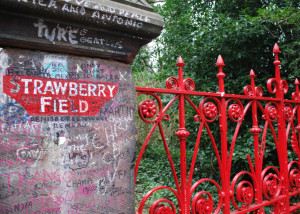 I discovered something way back then, and it’s been with me all my life: it doesn’t really matter if I don’t understand the meaning, message, or critic’s opinion of a piece of art – be it a song, a film or a painting. What’s most important is how it makes me feel. And there is no other Beatles’ song that makes me feel the way that “Strawberry Fields Forever” does. As I entered my bluesy, oddball, often solitary teenage years, I came to believe that if the Beatles produced one song specifically targeted to my soul, this was it. Even if no one else understood me, John Lennon surely did: Let me take you down…No one I think is in my tree…living is easy with eyes closed, misunderstanding all you see…it doesn’t matter much to me. Lyrically and musically, “Strawberry Fields” is the perfect eccentric song for the self-absorbed, mood-spinning outsider — far surpassing Paul Simon’s maudlin “I Am A Rock” or Janis Ian’s weepy (but wise) “At Seventeen.”
I discovered something way back then, and it’s been with me all my life: it doesn’t really matter if I don’t understand the meaning, message, or critic’s opinion of a piece of art – be it a song, a film or a painting. What’s most important is how it makes me feel. And there is no other Beatles’ song that makes me feel the way that “Strawberry Fields Forever” does. As I entered my bluesy, oddball, often solitary teenage years, I came to believe that if the Beatles produced one song specifically targeted to my soul, this was it. Even if no one else understood me, John Lennon surely did: Let me take you down…No one I think is in my tree…living is easy with eyes closed, misunderstanding all you see…it doesn’t matter much to me. Lyrically and musically, “Strawberry Fields” is the perfect eccentric song for the self-absorbed, mood-spinning outsider — far surpassing Paul Simon’s maudlin “I Am A Rock” or Janis Ian’s weepy (but wise) “At Seventeen.”
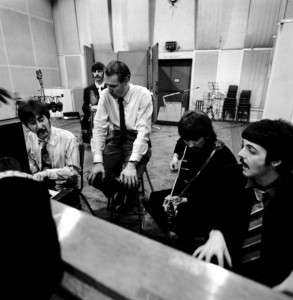 And then there’s the song’s haunting, dreamlike music: the eerie opening sound of the Mellotron; the heavy, dirge-like drums; the delicate placement of the zither-like swarmandal chords; the desperate, piping trumpets and droning cellos. Producer George Martin and sound engineer Geoff Emerick pushed their prodigious skills to the limit to satisfy John’s ever-changing demands for an otherworldly sound. Tape speeds were altered, tracks were played backwards and numerous song versions were spliced together – with nothing more at the engineers’ disposal than editing scissors, two tape machines, and a vari-speed control. It’s no wonder the song took five weeks and 45 hours to record! It’s the Beatles’ masterpiece.
And then there’s the song’s haunting, dreamlike music: the eerie opening sound of the Mellotron; the heavy, dirge-like drums; the delicate placement of the zither-like swarmandal chords; the desperate, piping trumpets and droning cellos. Producer George Martin and sound engineer Geoff Emerick pushed their prodigious skills to the limit to satisfy John’s ever-changing demands for an otherworldly sound. Tape speeds were altered, tracks were played backwards and numerous song versions were spliced together – with nothing more at the engineers’ disposal than editing scissors, two tape machines, and a vari-speed control. It’s no wonder the song took five weeks and 45 hours to record! It’s the Beatles’ masterpiece.
John and Paul truly did leave their hearts in Liverpool. By the time they recorded “Penny Lane” and “Strawberry Fields Forever” – songs originally intended for the upcoming “Sgt. Pepper’s Lonely Hearts Club Band” LP, the groundbreaking album that defined the psychedelic Summer of Love – the Beatles had literally seen it all. They had set the decade’s trends in music, fashion, lifestyle, and mind-altering substances, but they longed for simplicity and solitude, often yearning to “get back” to where they once belonged. They ruled a modern world, but they never forgot their roots. While their songs rarely referred specifically to their hometown lives and loves, their music was always full of the scrappy soul of working-class Liverpool.
Here’s the ultimate music video, from 1967! Is John saying “I buried Paul”…or “cranberry sauce?” at the end? You be the judge.
And now we’ll pick up the mood a bit. I don’t want you to go away in a funk.
© Dana Spiardi, Feb 19, 2014
]]>The clip was eventually worked into a promotional film for the “Lady Madonna” single. The Beatles hoped to release the package during their February/March 1968 meditation retreat in India with the Maharishi Mahesh Yogi (the object of John’s scathing “Sexy Sadie”). By the time the boys returned from their spiritual adventure, tensions would plague the band for the remainder of its days. Which is why this video is so special. It captures one of the last times the four came together in the studio and really rocked as a unit. Paul’s bass throbs like mad, Ringo’s drums thunder, and George’s fuzz box makes for some blistering guitar. The comic bark and response interplay between John and Paul at the end of the song is a poignant reminder of happier days. “Whaddya say?” “I say woof!”
© Dana Spiardi, May 23, 2012
]]>